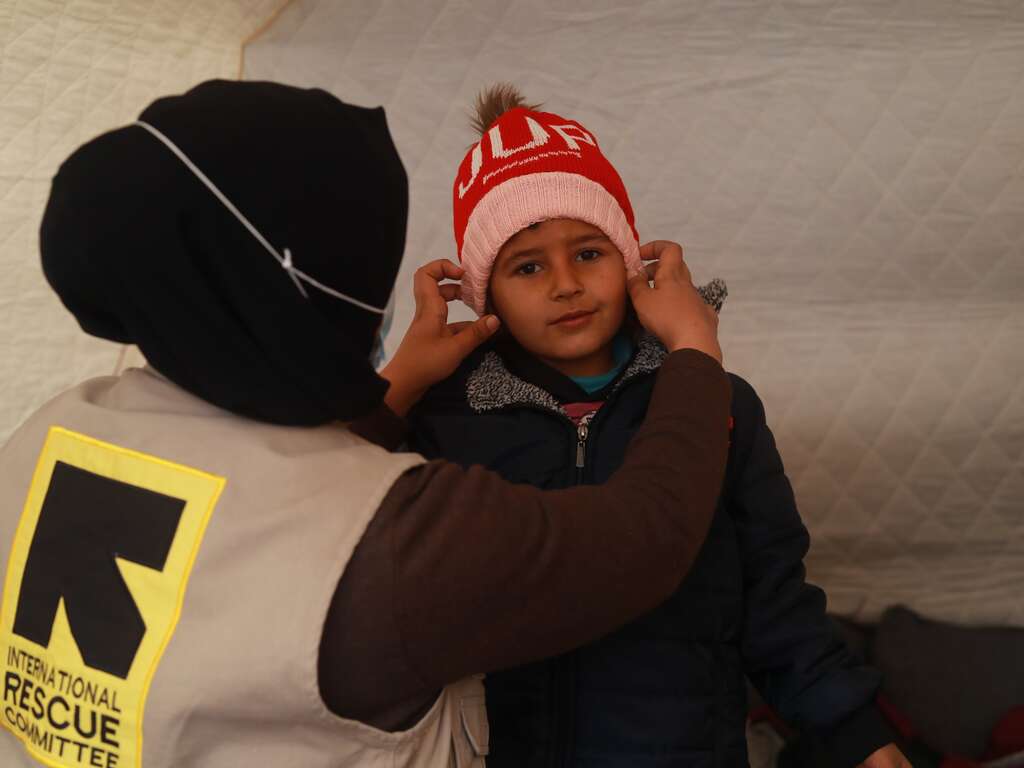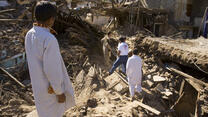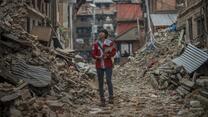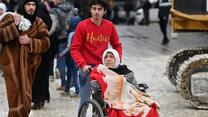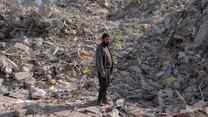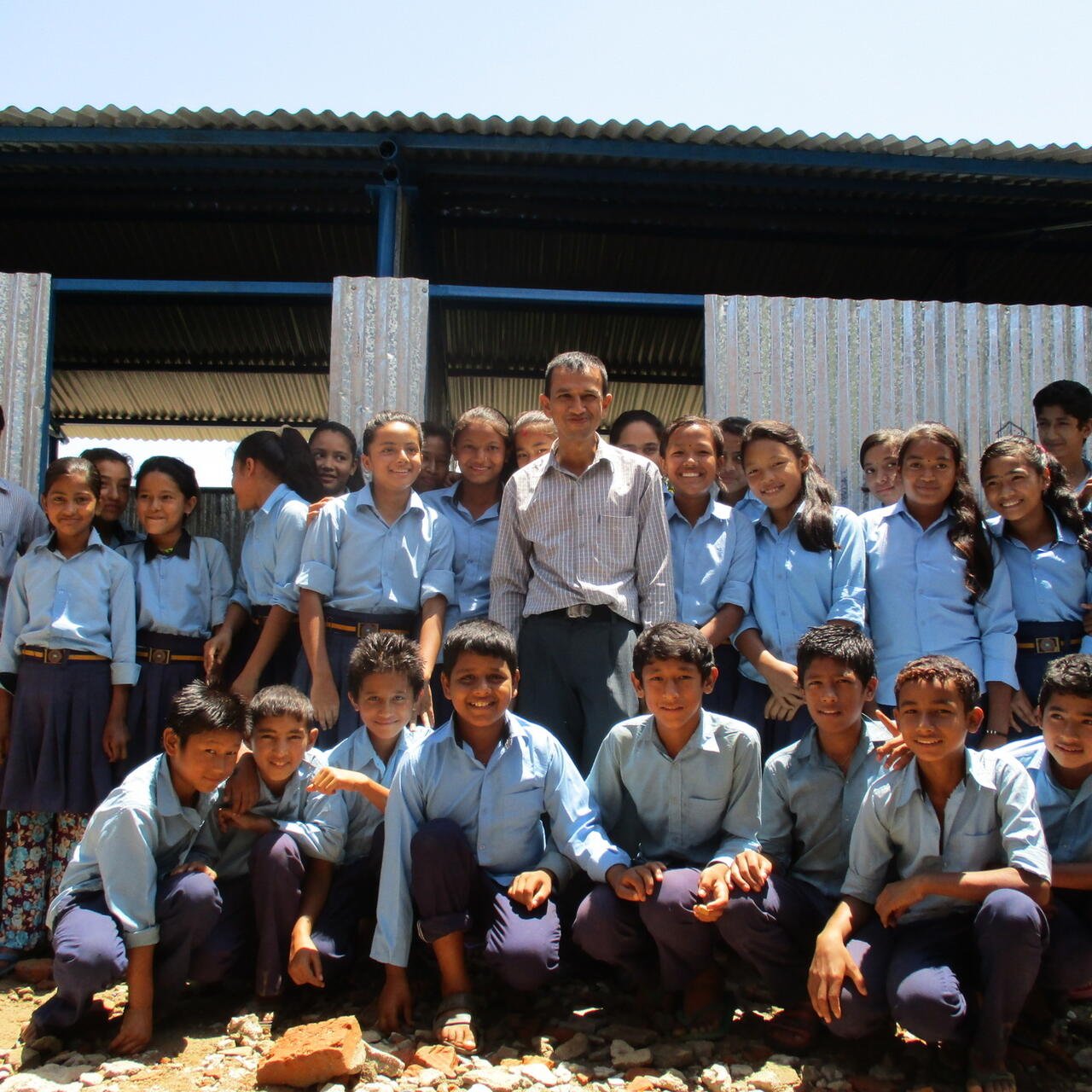
On April 25 a powerful earthquake shook Nepal, killing more than 8,800 people and demolishing over 600,000 homes in one of the world's poorest nations. With their schools damaged or destroyed, more than a million students have been unable to return to class since the disaster struck.
New learning centres help children return to the familiar routines they need to recover from the trauma of the quake
The International Rescue Committee and our partner Association for Aid and Relief Japan (AAR) are supporting Nepal’s efforts to get children back to school as quickly as possible. AAR is building 25 temporary learning centres to replace damaged schools in four villages in Dhading, a rural district near the earthquake’s epicentre. The centres will serve more than 4,200 primary and secondary school students.
“These new learning centres will not only enable thousands of children to resume their education, but also help them return to the familiar routines they need to recover from the trauma of the quake,” said Sanna Johnson, the IRC's regional director.
AAR is sourcing building materials from local suppliers where possible to support economic recovery, and recruiting local volunteers to assist with construction. Many people in Dhading lost jobs to the earthquake — the stipends residents receive for their work on the project will help them meet their families' basic needs and repair their damaged houses.
As seasonal monsoon rains continue to drench Dhading, AAR teams have been working to site the learning centres in locations that are safe from the landslides and flooding that threaten this remote area in the Himalayan foothills.
They have chosen durable, flexible building materials — including steel pipe and corrugated steel sheeting — to offer safer shelter during extreme weather and tremors than the area’s traditional stone and bamboo structures provide.
Sixteen learning centres that do not have clean water or adequate sanitation facilities nearby will be equipped with new water sources, washstands and latrines.
AAR teams have already completed a pilot learning centre in the village of Tahkre, and are replicating their project approach for the remaining centres.
Before starting to build, AAR visited area villages including Tahkre to meet with parents, teachers and principals to discuss their needs, explain the construction plan, and share the proposed learning centre designs. They heard how important it was to local communities for their children to have a safe place to learn.
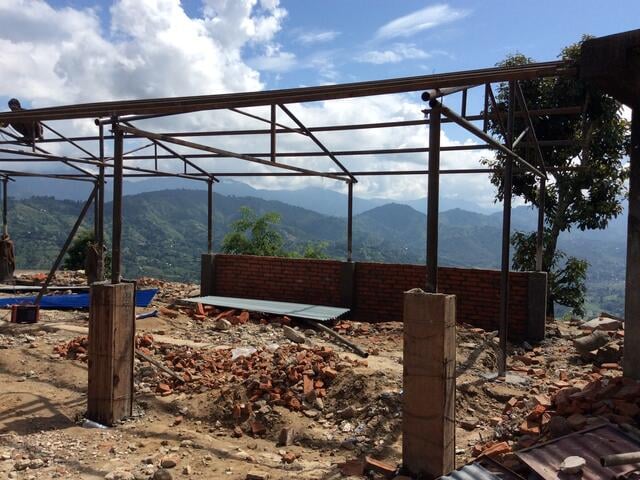
“We were at a loss when we saw our school buildings were destroyed,” said Roshan Dhakal, principal of Mahakaleshwori Higher Secondary School in Tahkre. “Many school materials and furniture were buried in the debris.”
Built on a steep mountainside, Mahakaleshwori was severely damaged by the quake, which left eight of its 12 classrooms unusable. Dhakal says he is relieved that his more than 560 students now have an alternative to attending classes outdoors under a tarp.
“We needed to run classes for the children. If we did not receive the temporary learning centre, our students would have to study outside in an unsafe environment.”
Working through difficult monsoon conditions, AAR is pushing to complete all 25 learning centres by the end of September.
Many students across Dhading also lost their textbooks, notebooks, pens and school uniforms in the disaster, so AAR is helping to make sure they have the supplies they need when they head back to class.
Nepal Earthquake Response
In the immediate aftermath of the April 25 quake, AAR aid workers rushed food and emergency supplies to thousands of people in remote communities. They remain on the ground in Nepal to help with their recovery.
